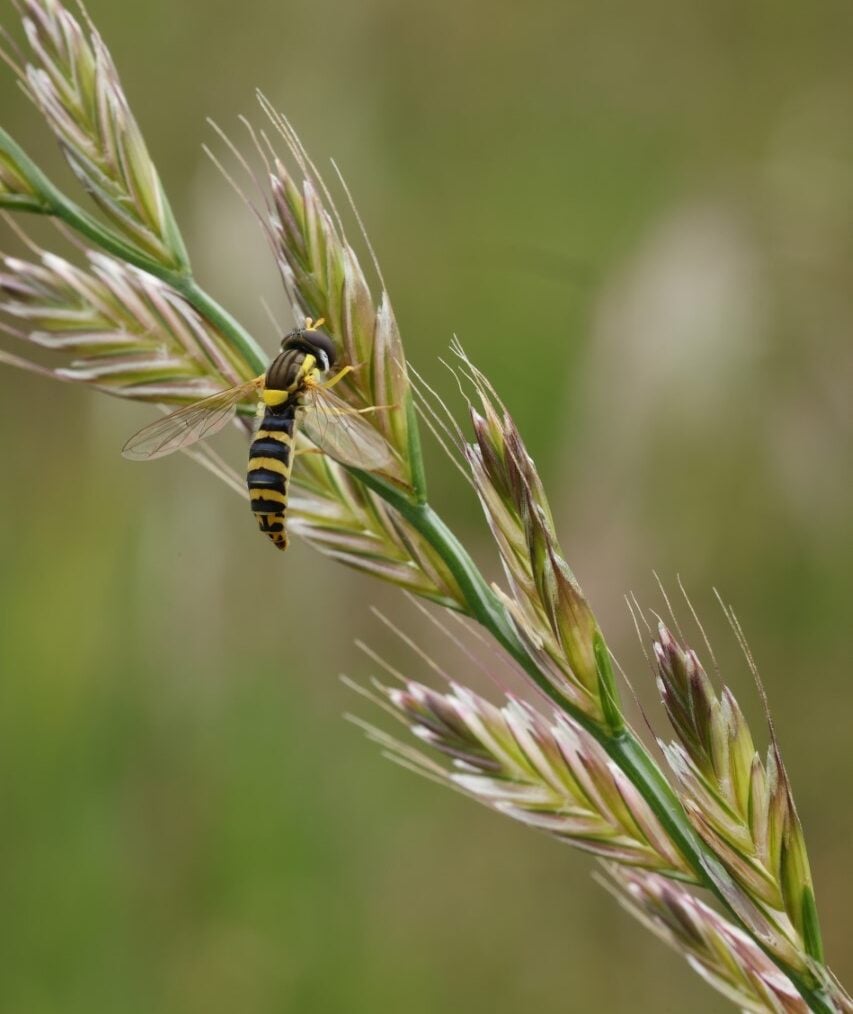Description
Westerwolds Ryegrass is an annual form of the agricultural grass species Lolium multiflorum. (other forms of which are commonly known as Italian ryegrass). None of this species group are native to Britain, they were first introduced for agriculture around 1830. This ryegrass is one of the quickest germinating and fastest growing temperate grasses there is. It produces a lush growth of broad shiny green leaves. In good growing conditions it will emerge from sowing within a few days and produce a cover crop in weeks. Whilst these qualities are not usually what is required for habitat creation it does have a special role in some schemes where a quick initial establishment of ground cover is essential.
Habitat Information
Westerwolds ryegrass is not native to the British Isles. It is dependent on introduction by deliberate sowing on cultivated ground. It is not very winter hardy and lacks persistence so soon disappears after a year or two and is only very rarely found surviving in the wild.
Westerwolds and Italian ryegrasses are traditionally sown on farms in temporary leys to produce a quick silage or hay crop. They are also used as green manure or cover crops.
Growing Information
The use of westerwolds ryegrass in habitat creation schemes is exclusively for problem sites as a quick growing temporary ground cover. Sown with a meadow mixture of much slower growing grasses and wild flowers it can provide so a called ‘nurse cover’ : greening up, protecting and stabilising the soil surface until the meadow components come through.
The use of westerwolds ryegrass does however complicate and increase the aftercare management of the sown area so is only really appropriate in special circumstances such as flood bank seeding where immediate engineering requirement for rapid ground cover takes precedence over longer term plant diversity objectives.
Westerwolds ryegrass can be sown at any time of year when conditions are suitable. It is not particularly winter hardy so autumn sowings can sometime suffer, particularly on cold or exposed sites.
Once established it grows rapidly upwards and being annual will soon develop flower heads and run to seed. It does not fill out or spread sideways too much so, provided it is not sown too thickly, it will remain open enough to allow the growth of meadow seedlings below.
Top-growth of the nurse cover should be cut and removed whenever it begins to close in and smother seedlings beneath. A ryegrass nurse cover will require more cuts and more bulk removing off site than regular sowings, particularly on fertile soils and given good growing conditions. Ideally the mowing schedule should include a mid-summer cut taken after the ryegrass has set but not shed its seed. This cut will help eliminate the annual ryegrass plants which have completed their lifecycle
Westerwolds ryegrass produces an extensive root structure which is good at grabbing and mopping up surplus nutrients loose in the soil, nitrates particularly. These nutrients are usefully harvested and removed by cutting and carting. This nutrient harvesting will not significantly change the underlying nutrient status of the soil, so unfortunately does not offer a solution for long term fertility issues such as high phosphates.
Sowing Rate
The maximum recommended sowing rate for Westerwolds ryegrass as nurse cover is 2g/m2 = 20kg/ha. (sown in addition to the main meadow mixture sown at the standard rate).
This rate is usually sufficient to give complete ground cover but not so dense that it swamps sown perennial grasses and wild flowers if managed rigorously. Although the seed is cheap it does not pay to sow more seed than necessary.


